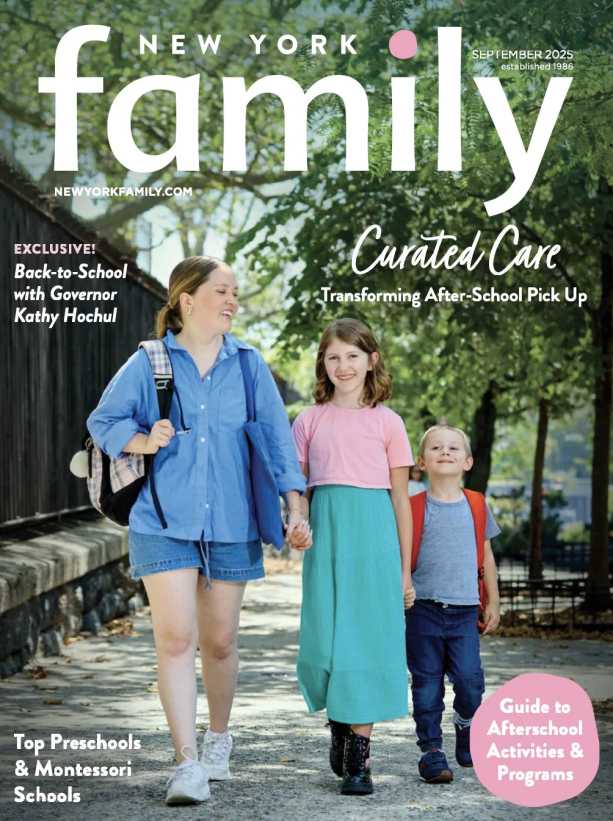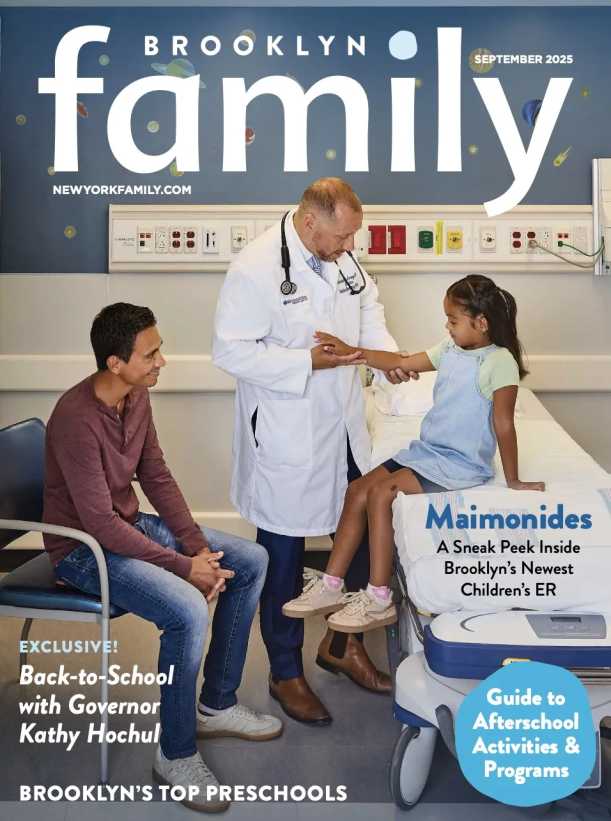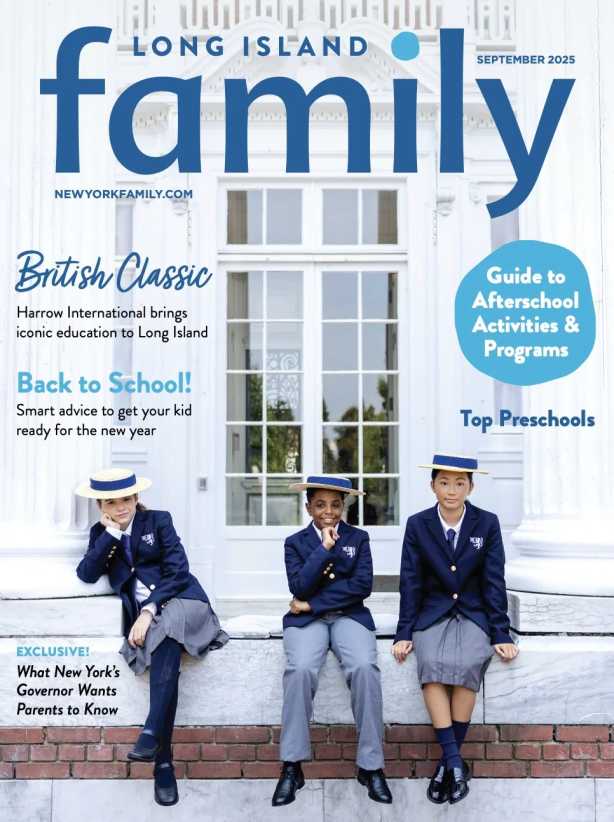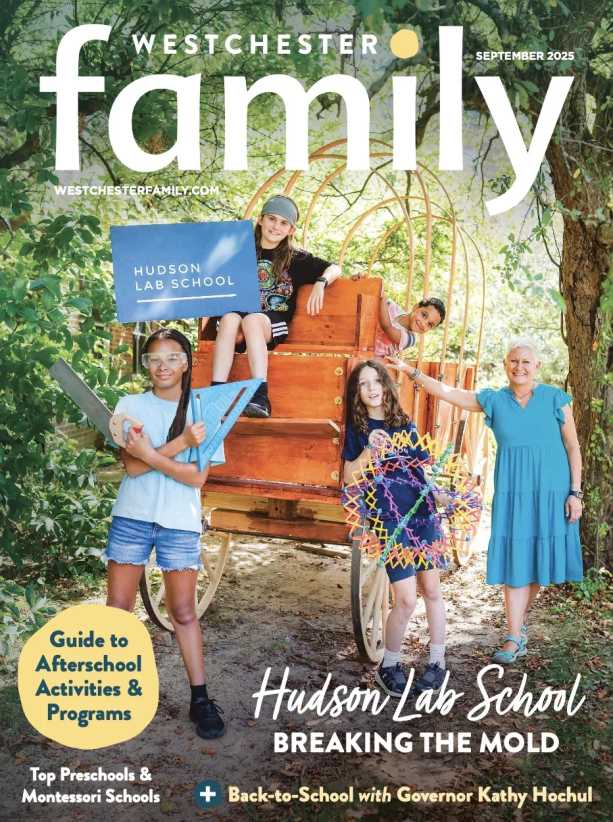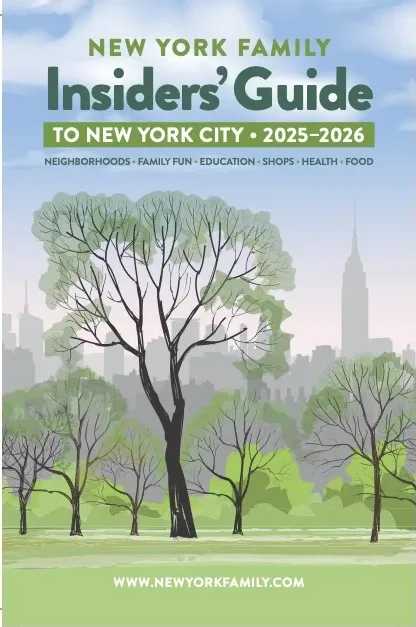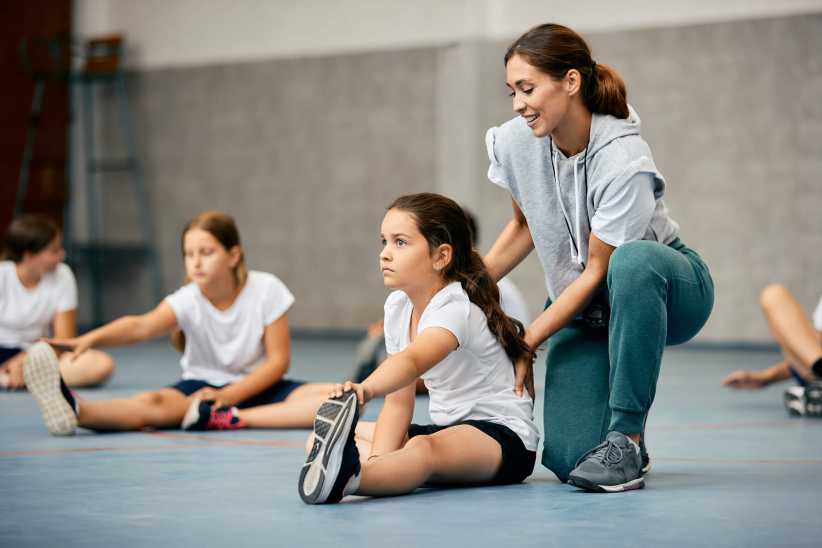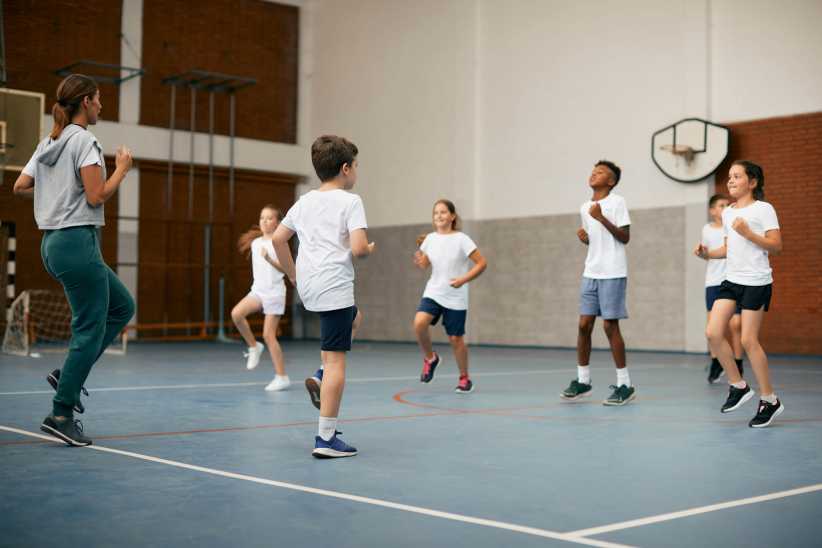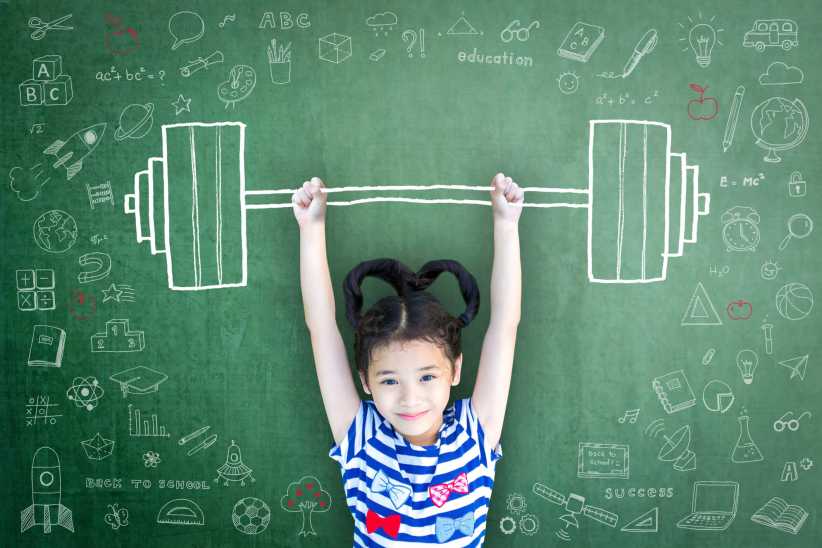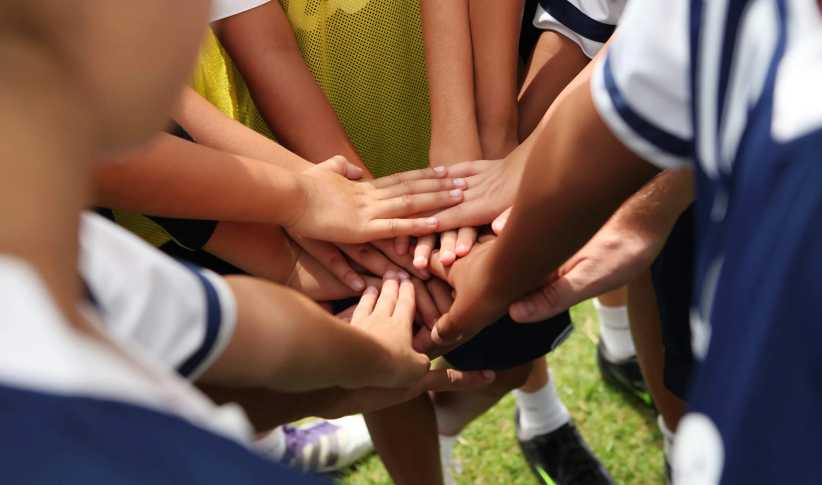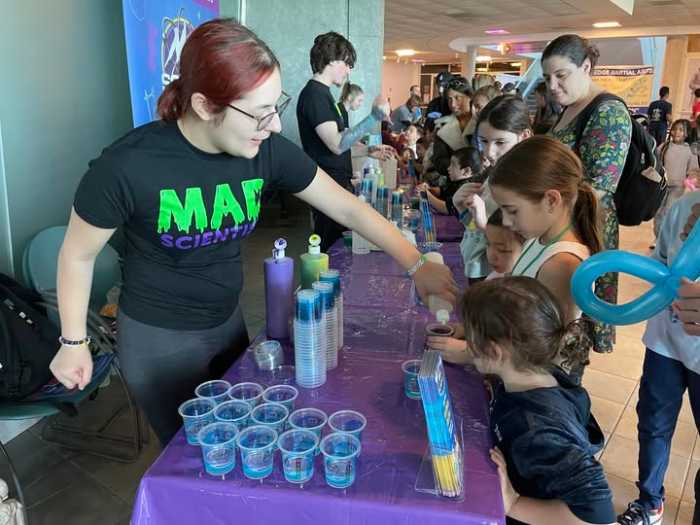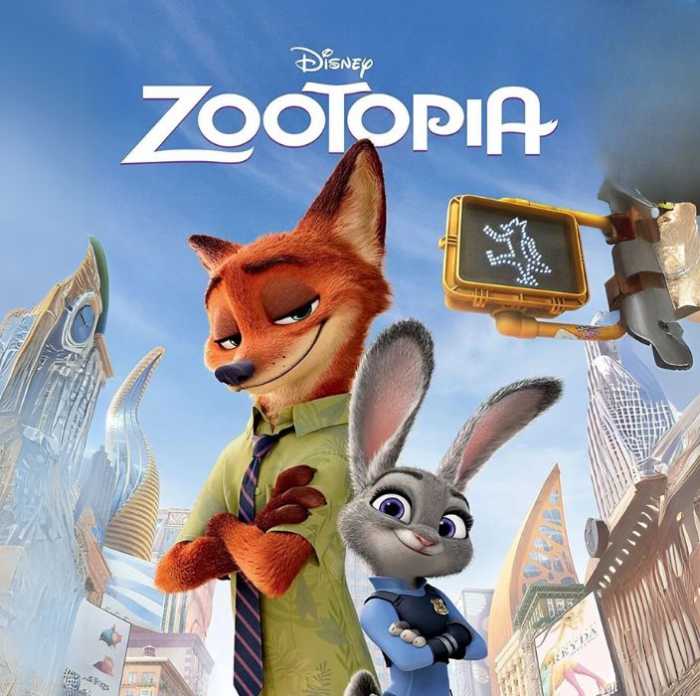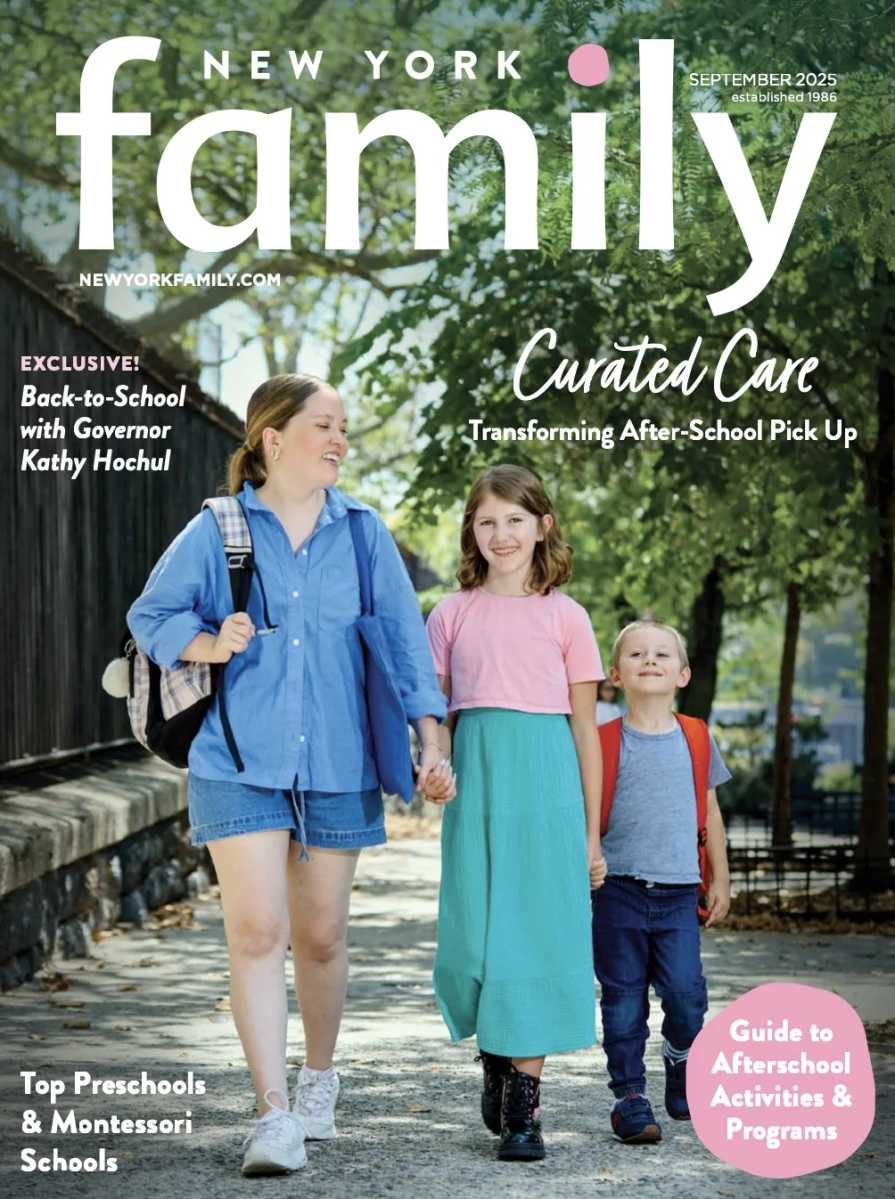
Four kids and a woman in a white lab coat are sitting around a long wooden table covered with test tubes, film canisters, markers, and a bag of Oreos. A new SciTech Kids class is starting, and it’s a special session for learning: Space Day.
“When your parents said you were going to go to a science class, what did you think?” Kim Magloire, the founder of SciTech Kids, asks her young students.
“You don’t seem convinced,” Kim says, her smile and confidence not at all shaken.
Founded in 2011, SciTech Kids teaches children as young as 3 and up to 13 about STEM—science, technology, engineering, and math—not just with lectures and demonstrations but by letting kids conduct experiments and discover scientific principles for themselves. Before starting the program on the Upper East Side, Kim had already been immersed in the education world as a researcher for Columbia and Rockefeller Universities, a test-prep author for the Princeton Review, and a tutor in various New York City schools. She was encouraged to create SciTech Kids by parents who were impressed with her work in the classroom and wanted her to offer something for their children in the summer.
Kim had more personal reasons for starting SciTech Kids as well. A mother herself, she recently discovered that there were no outlets to nurture her 5-year-old daughter’s natural curiosity and help her develop a passion for science. Although many local museums offer science classes, Kim had heard from friends that these classes were often too formal for young children—and that they tended to be short-term or even one-time solutions. “You get kids excited [about science], but then parents say, ‘What do we do now?’” she comments. For these reasons, SciTech Kids aims not only to start children on the path to learning and understanding, but also to keep them engaged throughout an entire semester or season of classes.
Armed with a belief that STEM education is vital for future success—it’s predicted that 8 out of every 10 jobs in the next decade will require math and science skills—Kim expanded from that first highly successful summer camp to include afterschool classes and, starting in November, weekend sessions. Recently, Kim has even been using the SciTech Kids model to organize science-themed birthday parties.
In all of SciTech Kids’ programs, children are divided by both age and ability. Kim says she tries to keep group sizes to no more than eight participants, striving for a four-to-one student to teacher ratio. Program teachers work across STEM fields and assistants range from engineers and chemists to biologists and mathematicians.
Hour-long afterschool classes, such as the one Kim is teaching today, are held weekly. The first half of Space Day involves using Oreos to depict the phases of the moon. Working in teams of two, the kids break cookies in half and carve the white frosting to match pictures of waxing crescents and gibbous moons. Once they’ve designed each phase and explained to the class which cookie is which, they’re allowed to eat their assignments. In the summer, the daily camps also include mornings out and about, filled with classifying leaves and trees, baking hot dogs in solar ovens, and learning about the science behind local attractions like the Central Park Amusement Park.
And it seems to be working. The same 7-year-old who doubted that the class would be fun isn’t chomping on Oreos with his classmates. He’s standing at Kim’s side so he can be first in line for the group’s next activity: launching film capsule rockets.
The class watches as he carefully fills his canister with water and a crushed Alka-Seltzer capsule before securing the lid and loading the “rocket” in its beaker launcher. “Five, four, three…” the class counts down. The fuel in his rocket begins to fizzle, then POP! The cap flies across the room.
The boy cracks a smile as his classmates cheer, but he doesn’t celebrate for long—he’s already planning his next experiment “Can I try again? I want to try adding less water. I think it will go even further.”
His enthusiasm and curiosity are solid proof that students do internalize the critical thinking skills that Kim strives to instill. “This is what science is really all about. It’s not memorization,” Kim says. And this boy is not the only one who’s getting it. Another student requested blueberries from the grocery store so he could see if they’d change color in the freezer, and Kim’s own daughter is designing the next generation of 3D printers after questioning why computers don’t have arms that do it all.
Of course, the younger children are less physically involved in the experiments, but “it’s not watered down—it’s a simplified version of something we’re doing with the older kids,” Kim insists. The younger participants are exposed to the same vocabulary and concepts, and are asked to form hypotheses and record their observations, developing the basic skills required for more advanced science in the future. Then, as the students get older, they get more hands-on, even testing the water quality around Central Park as “citizen scientists.”
Back in the classroom, Space Day is coming to an end and Kim’s scientists have more ideas for new rocket experiments than they have time to test. The 7-year-old boy who launched the film canister top now wants to take a rocket home to show his parents. Though Kim says she can’t let him take one, she does hand him a gooey blue blob. “What is this?” he asks.
“It’s a polymer,” Kim answers. “Over the next week, either put it in water, or leave it out in the air, and let me know what happens.”
His eyes light up. “Okay,” he says. “I’m going to put it in water.”
“Alright,” Kim says. “See you next week.”
